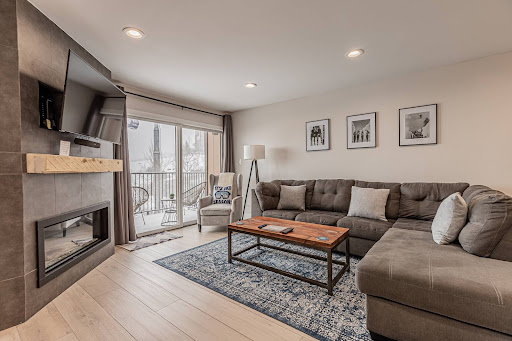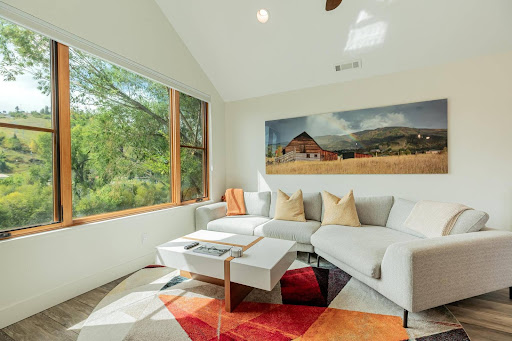At Retreatia, we sometimes hear our owners saying that their Steamboat Springs rentals shouldn't be priced lower than the local hotels, but what they don't understand is that there are a few hundred hotel rooms available in Steamboat Springs, Colorado, but a couple of thousand vacation rentals out there.
Many owners in this area get very emotionally attached to their rentals. As a result, they always want to ask for higher prices, and we understand that. So do we!
The problem is that there's a general lack of understanding among owners in this region when it comes to pricing practices and revenue optimization strategies.
Well, not for long!
This blog will help you understand all the ins and outs of pricing your vacation rental and give you valuable insights to make more money with your Steamboat Springs rental.
We leveraged the knowledge of a real revenue manager working across markets and overseeing thousands of properties to create the following paragraphs, so brace yourself for a wealth of knowledge!
What affects vacation rental revenue?
Many factors impact your vacation rental revenue, including seasonal variations, your location, property type, amenities offered, local events, reviews and quality scores, and booking windows. Moreover, all of these need to be carefully considered in comparison to your competition. After all, you want to navigate the market saturation and establish a competitive price or, even better, a comprehensive pricing strategy to attract guests over the long term.
Yes, the list is extensive — and this makes it all the more important to establish a well-thought-out strategy to secure bookings.

Several factors will influence what you can ask for a nightly rate, including your location, property type, and amenities. Pictured: Ski Inn 321.
What is a "comp set," and why is it important?
As you can see from the first item in this blog, competition is a factor. In vacation rentals, it's essential to know who you are competing with on a deeper level. A "comp set" or "competitive set" is a competitor analysis that refers to a group of rentals considered your direct competitors.
It's simple: keeping an eye on your competition will help you make informed decisions for your property, not just regarding pricing but also positioning.
Here are five critical components we consider when building your comp set:
- Amenities
- Size and guest capacity
- Location
- Performance
- Quality and review scores
This information can be really useful to see the bigger picture, empowering you to make data-driven decisions and stay competitive.
Luckily, there are data scraping tools available that provide owners (and Steamboat Springs property managers like us) with anonymized information on their competitors. Using them, we can see the effective rates and booking frequency when it comes to our competition. AirDNA, for instance, is a popular option.
Why should you be emotionally detached?
Remember we mentioned some owners are a bit too emotionally attached to their properties? That's not ideal in the pricing game...
Not only when you're comp shopping, but when you're thinking about pricing as a whole, always take a step back, look at what your property is offering, and compare it to the competition in a detached and objective way.
The number of owners we've encountered who want to charge much more than they can for their one-bedroom unit would really surprise you. When we tell them the figures they have in mind are not realistic, they argue they've seen similar rentals listed at the same price online.
Well, they did. And it makes sense. Because these are the unbooked rentals they're looking at. This, again, highlights the importance of having an excellent analytical tool and a keen understanding of pricing and demand.
What are dynamic pricing tools?
Luckily, in our digital age, you don't need to do all the work by yourself. There are many online tools known as dynamic pricing tools that will help you with dynamic pricing and the task of revenue management. They take roughly 70% to 80% of the load off your back and can represent about 20% to 30% more in revenues.
Some of the best names in the market are Wheelhouse, PriceLabs, and Beyond.
Here are some of the tasks they help with:
Adjusting rates based on demand and occupancy
Optimizing pricing for high and low seasons
Managing orphan days
Identifying major events in your area and increasing fees
Making the most of last-minute changes in rebooking your rental (and with a premium if possible)
These tools are excellent, of course, but having someone behind the wheel who knows what they are doing and who can pull in the pieces is really the way to squeeze every penny out of your property.
What does it mean to think strategically?
Some owners focus on average daily rates, while others prefer to concentrate on occupancy. At Retreatia, we like to combine both to maximize every single day or revenue.
How do we do it? When we have pricing power, we raise the fees, but when we don't, we become competitive with our pricing.
This means that our approach is conditional: we need to know when we're in the sweet spot and when we've passed it. For instance, we never want to head into our peak booking window and already be fully booked for fees that are not optimal. On the other hand, if our optimal window is already booked and at good prices, we love getting more aggressive to fill remaining and last-minute days.
It's important to understand that we need to sell some nights for prices that are less attractive than others. This is how dynamic pricing works. If a more affordable $100-night fills a gap two or three times a month, that's an average of 30 days a year that you're not vacant. Even if you're not making top dollar for these same dates, you're getting about $3,000 at the end of the year. Everything counts in large amounts, and this is $3,000 you wouldn't have if your prices were not optimal.
Of course, you have to find your own strategy, but this is a good illustration of how thinking about revenue optimization carefully makes a difference.

A "set it and forget it" approach to pricing is never the way to go. You must think strategically if you really want to maximize revenue with your rental. Pictured: The Boathouse.
How to make the most of your booking window?
The booking window, also known as lead time, refers to the time between when guests book a vacation rental and their actual arrival at the property.
In general, we don't want to get a one-night stay 100 days before check-in.
If people are booking our properties that far in advance, we prefer it to be high-quality reservations with longer bookings. Yet, as our booking window narrows, we increase our flexibility at the same speed.
Leveraging booking windows is about ensuring your prices are fair while also being competitive. If the rental doesn't book in its normal window, it's time to search for occupancy and become more aggressive with pricing.
The thinking is: once those nights have passed, you'll never get revenue for them. So it's crucial to be flexible and sell them while it's still possible.
What are high and low-value days?
In different markets, specific days hold varying pricing power. In our market, for instance, Fridays and Saturdays are strong booking days. Having these days available within the optimal booking window is great. Once these prime days are booked at the optimal price, the remaining available days can be offered at lower prices, sometimes even below market value, as there is lower demand for these dates.
We're not suggesting drastic price cuts just to attract bookings. However, if the market rate is $199, you might consider pricing your property at $185 to secure occupancy. Often, this slight adjustment can make a difference for a guest who is undecided about making a booking.
Flexibility and market alignment are key. Don't hesitate to promote your property when there is availability and when your chances are running out.
A successful strategy involves a combination of both high and low-value booking approaches. If you exclusively focus on either high or low, you might miss opportunities, either by not being booked enough or by being consistently booked at lower prices. The ideal approach lies somewhere in between.
Should you set restriction rules?
You can think of your restriction rules as factors that determine your exposure to the market. Each restriction directly reduces the number of potential guests for your Steamboat Springs rental.
Let's consider an example: suppose 20% of people are looking to book a rental for only two nights. If your property has a three-night minimum, you automatically exclude yourself from 20% of the market. Similarly, if you block Friday and Saturday check-ins, you immediately eliminate a significant number of potential guests.
The goal is to position yourself favorably for people seeking rentals in your region.
Remember: Just because you have a policy doesn't mean you will exclusively get bookings that way. Having a two-night minimum doesn't necessarily mean your cabin will "always" be booked for one night; it means it will be booked for two nights "as well."
Isn't it risky to ease restrictions?
As long-time property managers in Steamboat Springs, we know that Concerns often arise about the type of guests your rental may attract if you don't set restrictions.
We understand this worry, as nobody wants to attract undesirable guests. However, offering more flexible options, such as lower prices or last-minute bookings, doesn't necessarily equate to higher risks. Guests may engage in unexpected behavior, but it's not always tied to the price they pay.
Additionally, when your cabin is booked, you benefit from extra cleaning fees and obtain the guest's credit card information. Moreover, you're likely insured, providing an additional layer of protection.
Don't let the fear of unruly guests deter you from being flexible and maximizing your revenue through a strategic approach.
What are some key things to know about our market in Steamboat Springs, CO?
Boasting world-class skiing as well as a myriad of outdoor activities year-round, including hiking, mountain biking, fishing, horseback riding, and hot air ballooning, Steamboat Springs is really a destination with unending appeal.
The demand for vacation rentals in Steamboat Springs is on the rise, reflecting its fast-growing leisure market. However, with increasing demand comes a growing supply of rental units.
When the supply surpasses demand, competitiveness becomes crucial, particularly during periods of lower demand. In Steamboat Springs, the majority of units are 1 to 3-bedroom rentals, and the market is primarily driven by guests who drive from nearby areas. This results in a relatively short average booking window, typically around 30 days for rentals with up to 5 bedrooms.
The average booking length in Steamboat Springs is generally between three and four nights, with a noticeable trend of many two-night stays happening more last minute. Longer bookings of four, five, and six nights tend to be planned further in advance.
It's a good idea to regularly check and analyze these statistics when formulating your pricing strategy, as they directly influence your rates and restrictions. Staying informed about market trends ensures you stay competitive and responsive to the dynamic nature of Steamboat Springs's rental market.
